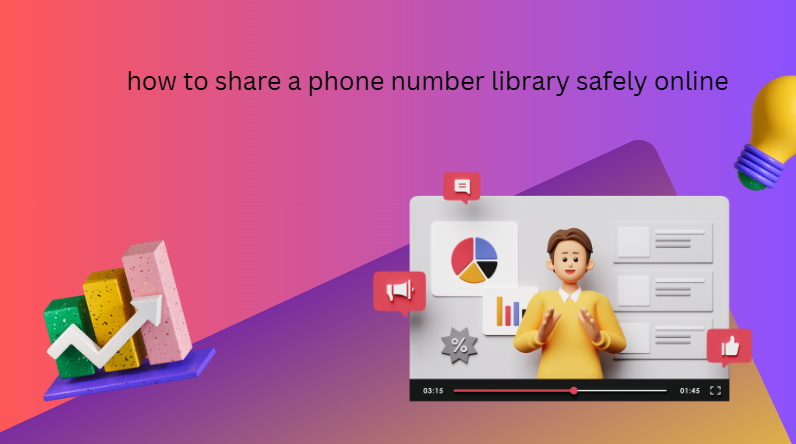Choosing the Right Platforms and Tools
Selecting the correct platform is one of the most vital steps when considering how to share a phone number library safely online. The tool or service you use should provide strong encryption, user authentication, and access controls to ensure that only intended recipients can view the information. Cloud storage solutions like Google Drive, Dropbox, or OneDrive can be secure if configured correctly, with file-level permissions and password-protected links. Specialized CRM (Customer Relationship Management) software or secure contact management tools may offer even stronger protections, such as multi-factor phone number library authentication (MFA), audit logs, and granular access settings. It is essential to avoid sharing sensitive data through unencrypted email attachments, public links, or unsecured messaging apps, as these methods expose information to interception. Additionally, verifying the platform’s data protection policies, compliance with privacy regulations like GDPR or CCPA, and history of security incidents can help you make an informed decision. Using vetted, reputable tools ensures that your phone number library remains protected throughout the sharing process.

Implementing Access Controls and Permissions
When deciding how to share a phone number library safely online, controlling who can access the data and what they can do with it is key. Access controls should be applied at the user level, allowing you to grant different levels of permissions based on the recipient’s role and necessity. For example, a marketing assistant might require read-only access, while a sales manager may need editing capabilities. Most modern collaboration tools allow for such distinctions, enabling you to limit the potential for accidental deletion, unauthorized editing, or information leakage. Furthermore, employing time-limited access links ensures that the shared data becomes inaccessible after a certain period, reducing long-term exposure. Monitoring activity logs can provide insights into who accessed the library and when, helping detect suspicious behavior early. Clear policies should also be established and communicated to all team members or partners, outlining their responsibilities for safeguarding the data. This combination of technical controls and user awareness forms a strong defense against unauthorized usage or accidental breaches.
Encrypting Data Before and During Sharing
A major factor in how to share a phone number library safely online is encryption—both before and during the sharing process. Encryption converts the phone number data into an unreadable format unless accessed with the correct decryption key, providing a strong layer of protection against unauthorized viewing. End-to-end encryption (E2EE) ensures that data remains encrypted from the sender’s device until it reaches the intended recipient, preventing even the service provider from reading it. Before uploading your phone number library to any online platform, consider encrypting the file locally with strong encryption software like VeraCrypt or AxCrypt. Once encrypted, even if the file is intercepted or the storage platform is compromised, the contents remain secure. During sharing, use encrypted communication channels such as Signal, ProtonMail, or secure file transfer services that support E2EE. By combining encryption with strong authentication methods, you significantly reduce the risk of your phone number library falling into the wrong hands.
Maintaining Ongoing Security Practices
Successfully learning how to share a phone number library safely online is not just about the initial transfer—it is about maintaining security over time. Regularly reviewing and updating access permissions is crucial, especially when team members leave an organization or a project concludes. Outdated access can quickly become a vulnerability if former collaborators still have entry to sensitive information. Backups should be maintained securely, preferably in encrypted formats and stored in locations separate from your active working environment. Routine audits of who has access and periodic security training for your team help reinforce safe sharing practices. Additionally, keeping software and platforms updated ensures that any known vulnerabilities are patched, reducing the chances of exploitation. Finally, staying informed about emerging cybersecurity threats and adapting your sharing strategy accordingly will help you keep your phone number library secure in an evolving digital landscape. A proactive, ongoing approach ensures that your efforts to protect sensitive contact data remain effective long after the initial sharing takes place.